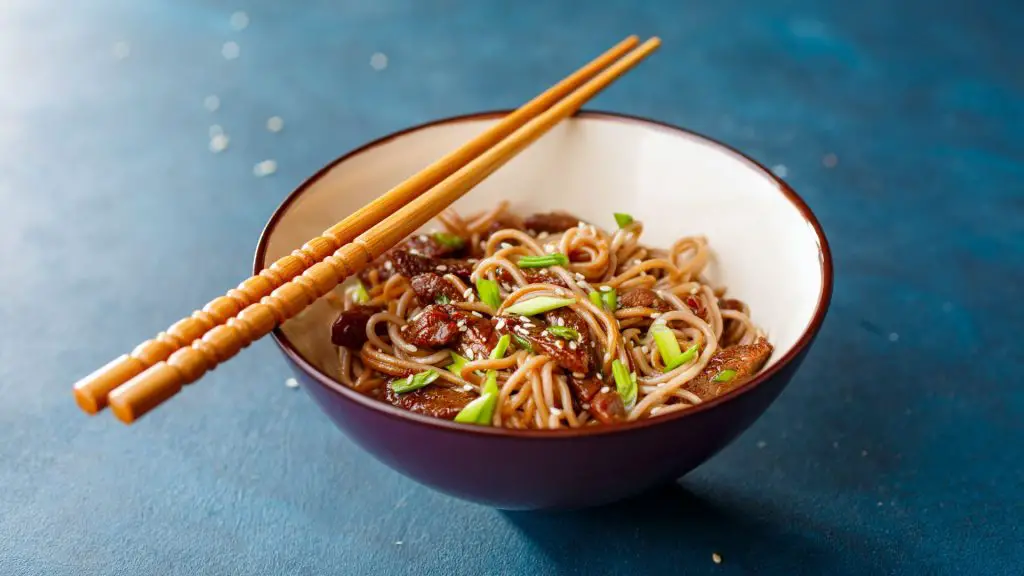Stir-fry is a popular cooking technique that originated in China but has now become popular all around the world. The technique involves cooking small pieces of vegetables, meat, and/or seafood in a wok or a frying pan over high heat. The food is tossed constantly with a spatula or other utensils to ensure even cooking and prevent it from sticking to the bottom of the pan.
Stir-fry is a quick and healthy way to cook food, as it uses minimal oil and retains most of the nutrients in the ingredients. However, one of the most common problems that many home cooks encounter when making stir-fry is excess liquid. The stir-fry can become watery and unappetizing, which can ruin the dish’s flavors and texture.
So, why is there so much liquid in my stir-fry? There are several factors that can contribute to this problem.
Causes of Too Much Liquid in Stir-Fry

Firstly, some vegetables have a high moisture content, such as tomatoes, mushrooms, and zucchini. When cooked, they release water, which can pool in the pan and make the stir-fry watery. This is especially true if you cook the vegetables for too long or at low heat, as it gives them more time to release their liquid.
Secondly, improper cooking techniques can also cause excess liquid in stir-fry. For example, if you overcrowd the pan, the food will not cook evenly, and the vegetables will release more water. Similarly, if you use too much oil, the vegetables will absorb it and release more liquid as they cook.
Thirdly, sauces and marinades can also contribute to excess liquid in stir-fry. If you add too much sauce or marinade, it can overwhelm the dish and make it too watery. Similarly, if you add the sauce or marinade too early in the cooking process, it can break down the vegetables and release more liquid.
Consequences of Too Much Liquid in Stir-Fry?

The consequences of excess liquid in stir-fry can be significant. Firstly, it can dilute the flavors of the dish, making it less flavorful and appetizing.
Secondly, it can make the stir-fry lose its texture and become mushy or soggy. This can be especially problematic if you are trying to achieve a crispy texture for your vegetables or meat.
Thirdly, excess liquid can make it difficult to achieve the desired consistency of the dish, such as a thick sauce or a dry stir-fry.
Finally, excess liquid in stir-fry can also be a safety concern. If the liquid is not cooked off properly, it can create a breeding ground for bacteria and other harmful microorganisms.
Tips for Reducing The Amount of Liquid in a Stir-Fry

Fortunately, there are several tips that you can follow to reduce the excess liquid in stir-fry. Firstly, select vegetables that have a low moisture content, such as carrots, bell peppers, and broccoli. Secondly, prepare your vegetables properly by washing and patting them dry before cooking.
Thirdly, use proper cooking techniques, such as cooking in batches and using high heat to prevent overcrowding and ensure even cooking.
Fourthly, manage your sauces and marinades carefully by adding them towards the end of the cooking process and using them sparingly.
Conclusion

In conclusion, excess liquid in stir-fry can be a common and frustrating problem for home cooks. However, by understanding the causes and consequences of this issue and following the tips to reduce it, you can create delicious and flavorful stir-fries that are the perfect combination of texture and taste.
By selecting low-moisture vegetables, preparing them properly, using proper cooking techniques, and managing sauces and marinades carefully, you can avoid excess liquid in your stir-fry and achieve the desired consistency and flavor.
Remember, excess liquid can compromise the taste and texture of your dish and even pose a safety concern, so it’s important to address this issue and create safe and delicious stir-fries every time.
